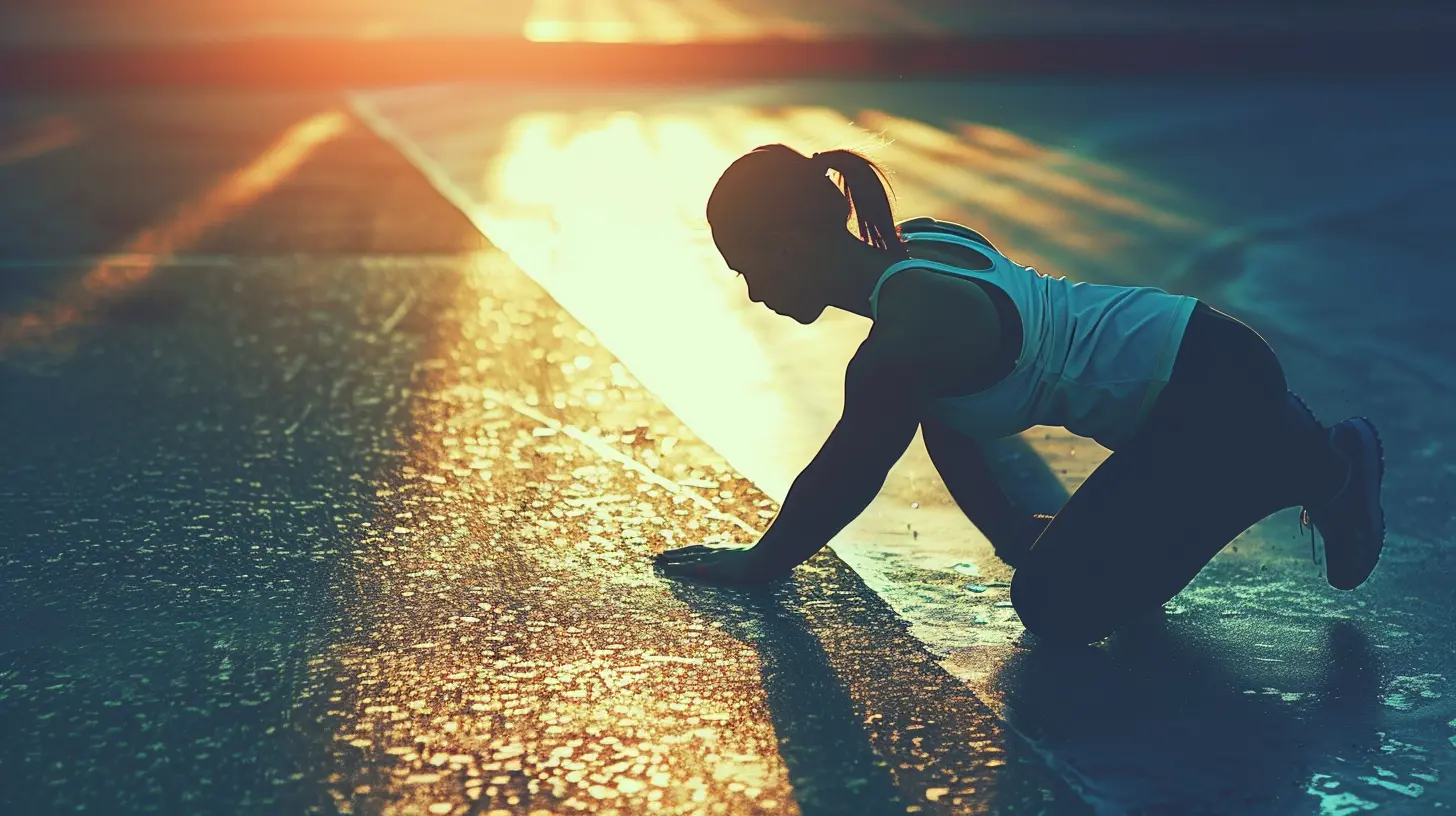Essential Stretches Every Runner Should Know
8 November 2025
Whether you're a newbie lacing up your first pair of trainers or a seasoned marathoner chasing a personal best, there's one thing every runner needs: a solid stretching routine. Think of stretching as maintenance for your body—the kind that keeps your muscles limber, reduces your injury risk, and boosts your overall performance. Skipping it? Well, that’s like driving a car without ever checking the oil. Eventually, something's gonna break down.
So, what are the essential stretches every runner should know? We're diving deep into the must-do moves that'll keep your legs happy, your form in top shape, and your post-run soreness under control. And don’t worry—this isn’t some stiff, robotic stretching guide. We're keeping it real, useful, and totally doable.
Let’s get into it.
Why Stretching Matters for Runners
Before we jump into the actual stretches, let's talk about why this stuff even matters. Why stretch when you could just hit the road and run, right?Well, here’s the thing: running is repetitive. Every stride puts stress on your muscles, joints, and tendons. Without proper flexibility and mobility, all that pounding can lead to tight muscles, imbalances, and eventually... injuries. And no one wants to be sidelined for weeks with shin splints or IT band syndrome.
Stretching helps:
- Improve flexibility and range of motion
- Enhance blood circulation
- Reduce muscle stiffness and soreness
- Prevent common running injuries
- Promote better running posture and efficiency
Bottom line? Stretching is your secret weapon. So let’s break down the best of the best.
When Should You Stretch—Before or After Running?
This is one of the top questions runners ask. The answer? Both—just in different ways.Dynamic Stretches: Pre-Run
Before heading out for your run, skip the static toe touches and go for dynamic stretches. These are active movements that warm up your muscles without holding a position for too long. Think leg swings, walking lunges, and high knees.Dynamic stretching preps your body for movement. It increases blood flow and activates the muscles you’re about to use.
Static Stretches: Post-Run
After your run, it’s static stretch time. This is when you hold each stretch for 20–30 seconds (sometimes longer). Static stretches help lengthen tight muscles, bring down your heart rate, and guide your body into recovery mode.Got it? Alright, let’s get into the meat of it.
Essential Pre-Run Stretches (Dynamic)
1. Leg Swings
Ever see elite runners swinging their legs like pendulums before a race? There’s a good reason for it.How to do it:
- Stand next to a wall or tree for support.
- Swing one leg forward and backward, keeping your upper body still.
- Do 10–15 swings per leg.
- Then, swing side-to-side across the front of your body.
This warms up your hip flexors, glutes, hamstrings, and inner thighs—all crucial for a strong stride.
2. Walking Lunges
This one’s a double whammy: it stretches your hip flexors and activates your glutes and quads.How to do it:
- Take a big step forward into a lunge.
- Keep your back straight and your front knee above your ankle.
- Push off the back foot and step forward into the next lunge.
- Do 10–12 lunges per leg.
You’ll feel looser by the time you finish. Promise.
3. High Knees
High knees get your heart pumping and your muscles firing.How to do it:
- Stand tall and jog in place, lifting your knees as high as possible.
- Pump your arms like you’re running.
- Keep a fast pace for 30–60 seconds.
It’s not just cardio — this gets your whole system revved up for action.
Essential Post-Run Stretches (Static)
Now your muscles are warm and loose. Time to show them some love with these cooldown moves.4. Standing Hamstring Stretch
Hamstrings work overtime when you run, so let’s give them the attention they deserve.How to do it:
- Stand tall and place one heel on a low bench or curb.
- Keep your leg straight and toes pointing up.
- Hinge forward slightly at the hips, keeping your back straight.
- Hold for 30 seconds, then switch legs.
You’ll feel this one all along the back of your thigh, and that’s a good thing.
5. Quad Stretch
Tight quads can pull on your knees and mess with your stride. Let’s fix that.How to do it:
- Stand on one leg and grab the opposite ankle behind you.
- Pull your heel toward your glutes.
- Keep your knees close together and stand tall.
- Hold for 30 seconds per side.
Use a wall or post if your balance is wobbly. No shame—just stretch.
6. Calf Stretch
Ever had sore calves after a run? This one’s for you.How to do it:
- Stand facing a wall, hands pressed against it.
- Step one foot back, keeping it straight with the heel on the ground.
- Bend your front knee slightly and lean into the wall.
- Hold for 30 seconds, then switch legs.
Do this with bent back knees too for your soleus (the deeper calf muscle).
7. Hip Flexor Stretch
Sitting all day? Your hip flexors are probably screaming.How to do it:
- Step into a lunge position with your back knee on the ground.
- Press your hips forward gently.
- Keep your chest lifted and spine straight.
- Hold for at least 30 seconds per side.
This one's a game-changer for posture and stride length.
8. IT Band Stretch
The illiotibial (IT) band runs from your hip to your knee. Tightness here can cause major issues, especially for runners.How to do it:
- Stand tall and cross your right leg behind your left.
- Reach your right arm overhead and lean to the left.
- You’ll feel a stretch down the outer hip and thigh.
- Hold for 30 seconds, then switch.
Feels weird at first, but your knees will thank you later.
9. Glute Stretch (Figure 4)
Your glutes are your powerhouses. Keep ’em happy and firing.How to do it:
- Lie on your back with both knees bent.
- Cross your right ankle over your left knee (making a figure 4).
- Grab behind your left thigh and pull toward your chest.
- Hold 30 seconds each side.
This loosens up your glutes and piriformis, reducing lower back and hip tension.
10. Lower Back Stretch
Running can tighten your lower back over time.How to do it:
- Lie on your back and pull both knees to your chest.
- Rock gently side to side.
- Hug yourself like you mean it.
- Hold for 30–60 seconds.
This one’s perfect for relaxing right after a long run.
Pro Tips for Stretching Like a Pro
- Never bounce. Stretching isn’t a trampoline workout. Move slowly and hold each position.- Breathe. Seriously. Deep breathing helps your muscles relax into the stretch.
- Listen to your body. Stretching should feel good, not like torture.
- Stay consistent. A few stretches a week won’t cut it. Make it part of your routine.
Bonus: Foam Rolling for Runners
Okay, this isn’t exactly stretching—but it’s close. Foam rolling is like a deep tissue massage you give yourself. It helps break up muscle knots (a.k.a. trigger points) and improves blood flow.Roll out your calves, quads, IT bands, glutes, and hamstrings a few times a week. You might grimace a bit, but your muscles will thank you.
Final Thoughts
Stretching isn’t the sexiest part of running, but it's one of the most important. Think of it as investing in your long-term performance and health. It doesn’t have to be complicated or take forever—just 10–15 minutes before and after your run can make a world of difference.Add these essential stretches to your routine, stay consistent, and your body will reward you with smoother runs, fewer injuries, and quicker recovery. That’s a win-win-win if you ask me.
Now go stretch it out!
all images in this post were generated using AI tools
Category:
RunningAuthor:

Nelson Bryant
Discussion
rate this article
1 comments
Kendra Davis
Great article! I’m always looking to improve my running game. It's fascinating how essential stretches can enhance performance and prevent injuries. I’m curious to see which stretches have worked best for others—any personal favorites that you find particularly effective?
November 15, 2025 at 12:34 PM

Nelson Bryant
Thank you for your feedback! Some personal favorites include the calf stretch, hamstring stretch, and hip flexor stretch. They’re great for improving flexibility and preventing injuries. Happy running!


